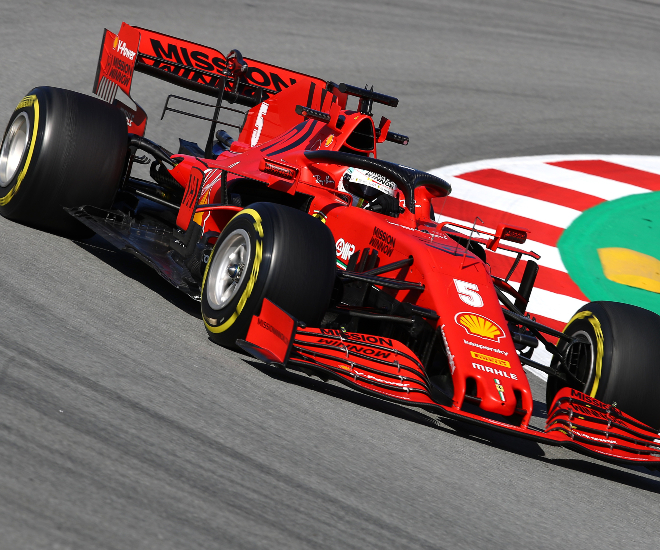
Formula 1 (F1) has captured the hearts of many around the world for generations since its inaugural race in 1950 at Silverstone, England. The races through the years represented the pinnacle of motorsports and the pursuit of excellence. Its heritage is closely associated with the idea of freedom, which is a tenet cherished by the West and an aspiration for better days post-World War II.
Back in the days, Europe was still reeling from the war’s aftermath and car racing provided that pump of adrenaline for people. For the first Grand Prix, circuits from seven countries were used: Britain, Monaco, America, Switzerland, Belgium, France and Italy. As we move into more recent times, each season will feature 23 races. The promotion of F1 to the masses falls under the purview of the Formula One Group, founded by Bernie Ecclestone in the 1970s. In 2017, the group was acquired by US media house Liberty Media for an estimated sum of US$8 billion including debt.

While motorsports flourished under the wings of Ecclestone, the “F1 Supremo” was stuck in the old ways of how it ran the business. Many would agree that the business model was outdated despite the tremendous potential that could be explored. For the most part, F1 was like a crowned jewel that was guarded against prying eyes. The reach of what goes behind the scenes of racing became severely limited and fans were restricted to watching live broadcasts of the race on TV and following international news outlets.
A quote from Ecclestone aptly summarises his philosophy of running the Formula One Group: “Most of these kids haven’t got any money. I’d rather get to the 70-year-old guy who’s got plenty of cash… I’m not interested in tweeting, Facebook and whatever this nonsense is.”
Before the takeover by Liberty Media, Ecclestone ran the group like an old man’s club that was not performing well financially because of the many missed opportunities. Already boasting a staggering 400 million global viewers, F1 races are among some of the most popular sporting organisations like the FIFA World Cup and Tour de France. In America, TV audience surged “by 40 per cent since NBC Sports took over the domestic broadcast rights in 2013” as The New York Times reported. What this means for Formula One Group’s new owners is an untapped market and its owners, led by CEO of Liberty Media Gregory Maffei are looking to break into it.

So far, the group has made good progress as it had brought in revenue of US$2.1 billion last year in 2021 and its operating income stands at US$92 million. On average, each race brings in about US$4 million for the group and the figures are likely to rise in the future. Alongside the financial figures, it is noted that physical attendance at the Grand Prix also increased over the years. This year alone saw the Australia Grand Prix in Melbourne set a new attendance record of 420,000, which eclipsed the previous high of about 400,000 in 1996.
Much research was also done following the acquisition and with the data collected, the team identified areas where the group can leverage and expand on to grow its fan base further. Under its past management, the presence of F1 was confined to TV and press coverage, but the ubiquitousness of social media has altered the relationship between motorsports and their fans. More engagement can be created online through platforms such as Facebook, Instagram, TikTok and YouTube, which in turn means another potential revenue stream for the group.
Zeroing on this capability for scaling, more attention has been paid to growing the brand’s online presence. Last year, F1 amassed 41.9 million followers across its social media platforms. The growth is among the fastest in the sporting category. Another interesting point that was raised is the average age of its fan, which has been lowered from 36 to 32. The next generation of spenders will come from the burgeoning group of Millennials and Gen Zs, and cultivating a relationship with this group would only serve to the benefit of the organisation in the future.
Another move towards making F1 more appealing to a wider audience is the announcement of Crypto.com as the global partner of the Grand Prix, sponsoring the different races worldwide. This enables F1 to be firmly planted in current conversations and be top of mind for many and its close association with the current times. Not forgetting its core fans, extra content, like stats and insights, is put out so that they can also tune in to the event’s happenings but with more in-depth coverage.
In tandem with the growth of cryptocurrency is a slew of other movements like the increased emphasis on sustainability. On this topic, F1 has announced it is working to develop a 100 per cent sustainable fuel, which will be used in F1 cars from 2026. This is in line with the global shift towards next-generation hybrid engines and the drop in fossil fuel consumption in many countries. In a similar vein, to tackle issues about sustainability, F1 introduced a new race category called “Formula E”. But the question remains about how feasible Formula E is and how it fits in the overall portfolio of F1.
What does the future of F1 look like? The answer to this question can be gleaned from how its owners lead the brand. With an extensive background in entertainment, one can expect F1 to follow closely how the other subsidiaries under Liberty Media are. Content is king and a rejuvenated F1 will definitely be the shining star that motorsports fans can look forward to when it comes to content on car racing. The future of F1 has just begun, so get ready for a ride of a lifetime.
For more F1 reads, click here.

